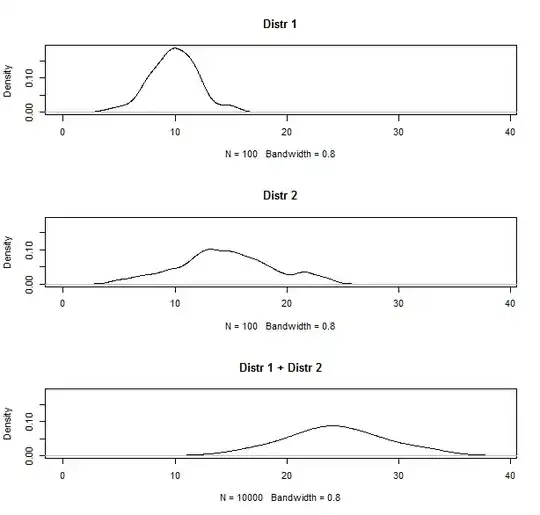Background:
I try to estimate the potential energy supply within a geographical area using spatially explicit data.
For this purpose I use a Bayesian network and several spatial data layers as input data (e.g resource supply, conversion efficiency). The study area is devided into smaller area entities. For each entity my Bayesian network model reads the input data and computes the corresponding energy supply (MCMC simulations). As a result I obtain for each entity a probability distribution of the expected energy supply (e.g Distr or Distr 2).
However, I am equally interested in the total supply within the study area. That means I need to aggregate (sum) the potential energy supply of all the individual entities in order to get the overall supply potential within the area (e.g. Distr 3).
Question:
I would like to combine several probability distributions by adding their values into one single probability distribution (see above).
- What is the correct mathematical/statistical term of the operation I want to do?
Below I provide a graphical explanation of what I would like to do.
